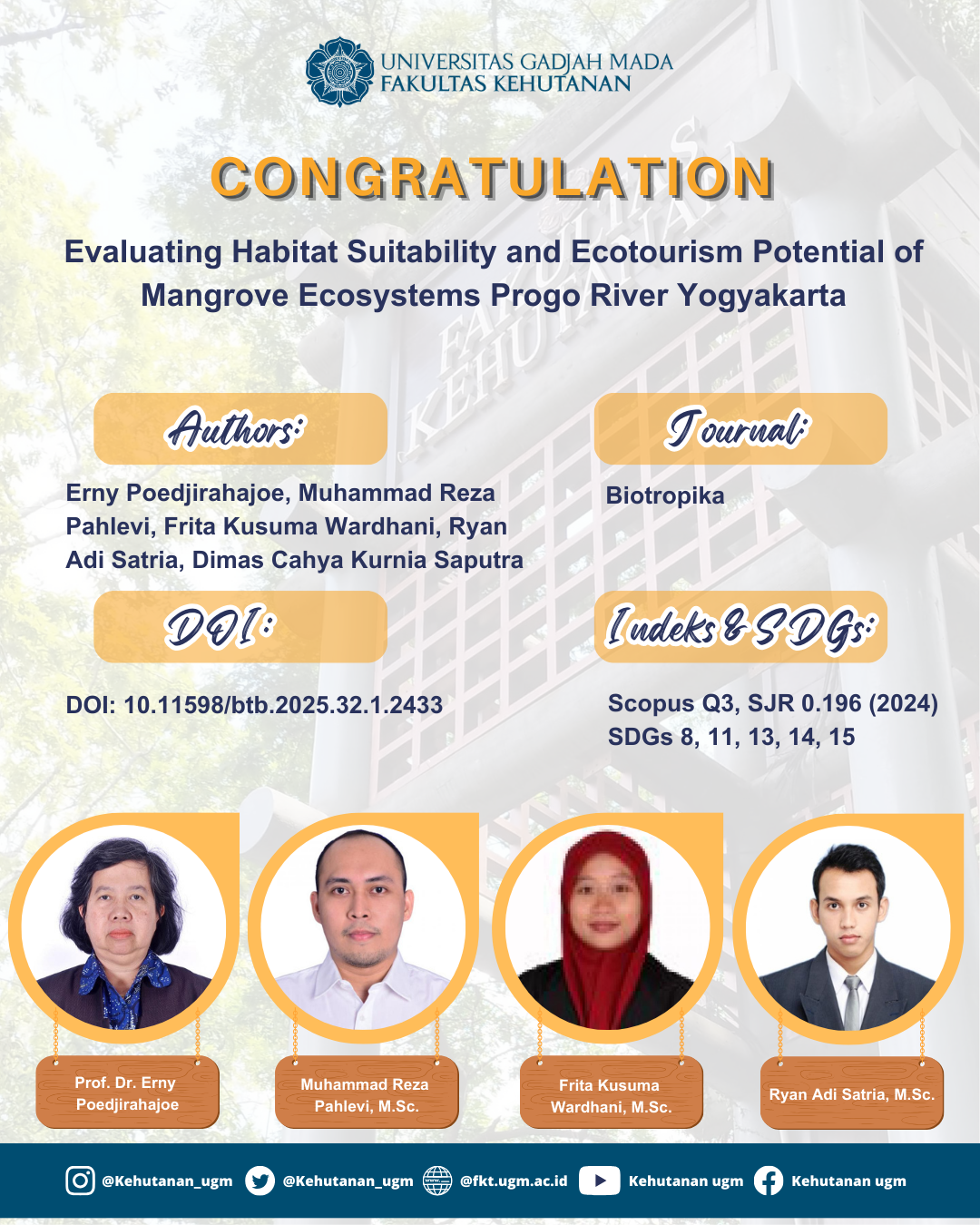
Abstract
Mangrove forests are a transitional ecosystem located between land and sea. Habitat factors greatly influence the growth of mangrove plants. Habitat suitability is reflected in the suitability of the species that can grow in the habitat. Increased growth will ultimately increase water productivity, which can be seen from the presence of various types of biota and environmental improvements. The local community planted mangrove species (Sonneratia sp.) along the Progo River in an area of 75 h. This study aimed to: 1) assess the quality/characteristics of the Progo River waters that will be used for a water tourism center and 2) assess the suitability (IKW) of the Progo River waters for water tourism in Bleberan Hamlet. Data collection was carried out using nested sampling. Data analysis included the diversity of biota types using the Shannon Diversity Index and vegetation analysis. The results showed that the highest temperature occurred at station 3 plot 10, the highest mud thickness was observed at station 5 plot 9, the highest salinity was detected at station 3 plot 10, the highest water clarity was observed at station 2 plot 7, the highest pH was seen at station 1 plot 6 and 7, while the highest DO was spotted at station 3 plot 8. Some of the biota obtained included crustaceans, gastropods and actinopterygii. The habitat types of vegetation obtained were trees, shrubs, and some herbs. Based on the Tourism Suitability Index (IKW) value, there were 3 stations suitable for camping/outbound, 2 stations suitable for relaxing, and 2 stations suitable for river tracks.
SDGs:
SDG 8: Decent Work and Economic Growth
SDG 11:Sustainable Cities and Communities
SDG 13:Climate Action
SDG 14:Life Below Water
SDG 15:Life on Land
Link Dokumen:
Download
